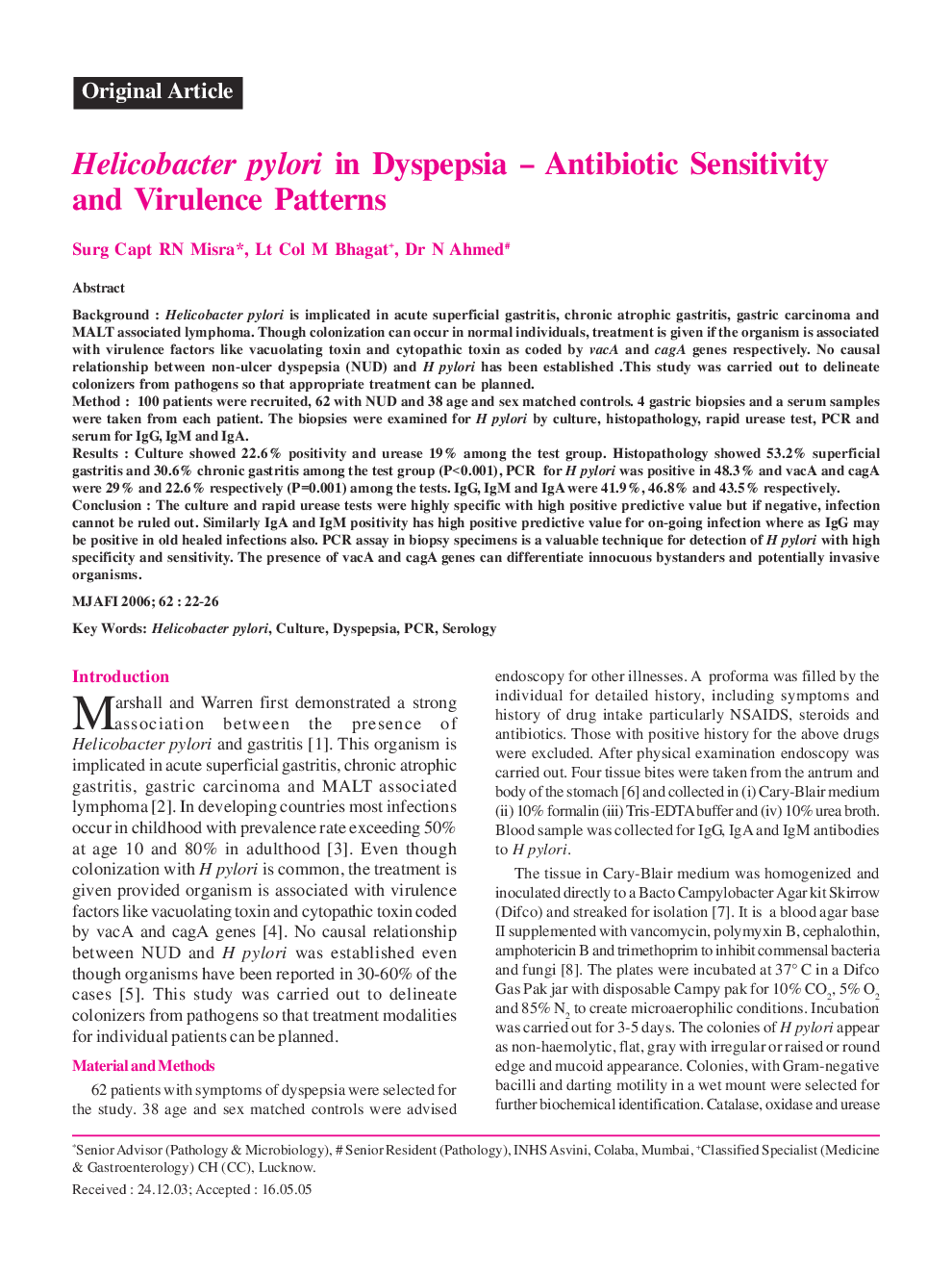| Article ID | Journal | Published Year | Pages | File Type |
|---|---|---|---|---|
| 3162543 | Medical Journal Armed Forces India | 2006 | 5 Pages |
BackgroundHelicobacter pylori is implicated in acute superficial gastritis, chronic atrophic gastritis, gastric carcinoma and MALT associated lymphoma. Though colonization can occur in normal individuals, treatment is given if the organism is associated with virulence factors like vacuolating toxin and cytopathic toxin as coded by vacA and cagA genes respectively. No causal relationship between non-ulcer dyspepsia (NUD) and H pylori has been established. This study was carried out to delineate colonizers from pathogens so that appropriate treatment can be planned.Method100 patients were recruited, 62 with NUD and 38 age and sex matched controls. 4 gastric biopsies and a serum samples were taken from each patient. The biopsies were examined for H pylori by culture, histopathology, rapid urease test, PCR and serum for IgG, IgM and IgA.ResultsCulture showed 22.6% positivity and urease 19% among the test group. Histopathology showed 53.2% superficial gastritis and 30.6% chronic gastritis among the test group (P<0.001), PCR for H pylori was positive in 48.3% and vacA and cagA were 29% and 22.6% respectively (P=0.001) among the tests. IgG, IgM and IgA were 41.9%, 46.8% and 43.5% respectively.ConclusionThe culture and rapid urease tests were highly specific with high positive predictive value but if negative, infection cannot be ruled out. Similarly IgA and IgM positivity has high positive predictive value for on-going infection where as IgG may be positive in old healed infections also. PCR assay in biopsy specimens is a valuable technique for detection of H pylori with high specificity and sensitivity. The presence of vacA and cagA genes can differentiate innocuous bystanders and potentially invasive organisms.
